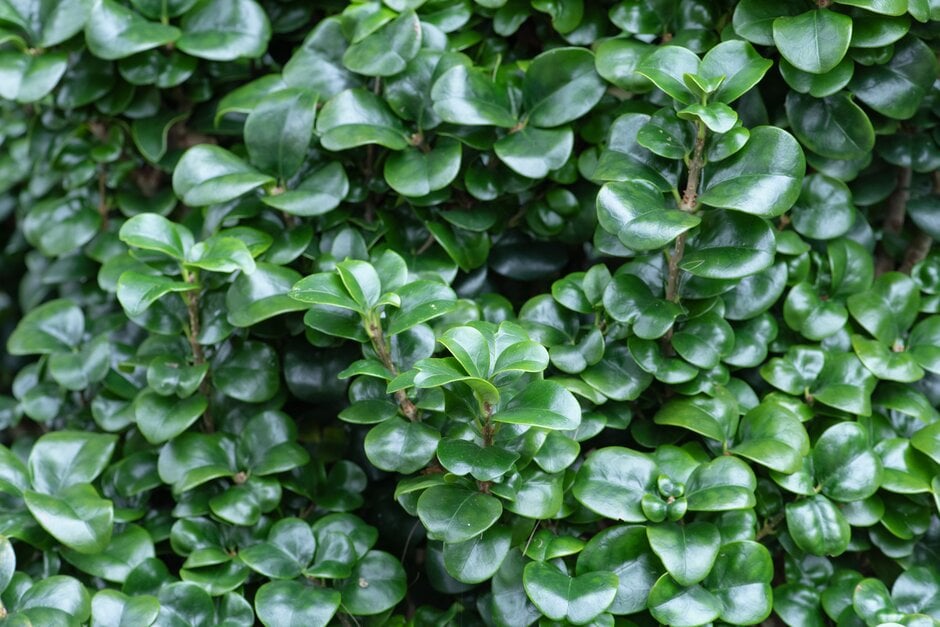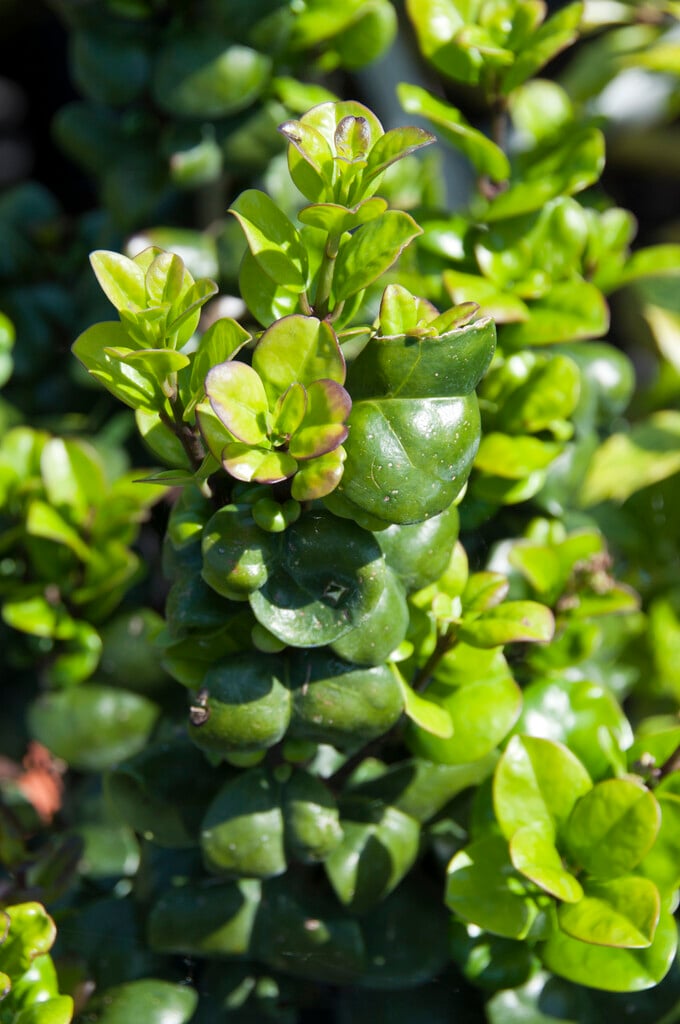Ligustrum japonicum 'Rotundifolium'
Japanese privet 'Rotundifolium'
A compact, slow-growing, evergreen shrub with very thick, shiny, rounded, wavy, dark green leaves, tightly packed on stiff branches. Upright, conical sprays of small, scented, off-white flowers are followed by lax clusters of small, round, purple berries
Size
Ultimate height
1–1.5 metresTime to ultimate height
10–20 yearsUltimate spread
1–1.5 metresGrowing conditions
Moisture
Moist but well–drained, Well–drainedpH
Acid, Alkaline, NeutralColour & scent
| Stem | Flower | Foliage | Fruit | |
| Spring | Green | |||
|---|---|---|---|---|
| Summer | Green | |||
| Autumn | Green | |||
| Winter | Green |
Position
- Full sun
- Partial shade
Aspect
East–facing or South–facing or North–facing or West–facing
Exposure
Sheltered Hardiness
H5Botanical details
- Family
- Oleaceae
- Native to GB / Ireland
- No
- Foliage
- Evergreen
- Habit
- Bushy
- Potentially harmful
- Harmful if eaten. Wear gloves and other protective equipment when handling Pets (dogs): Harmful if eaten. For further information and contact numbers regarding pets, see the HTA guide to potentially harmful plants
- Genus
Ligustrum can be decidous or evergreen shrubs or small trees, with simple, entire leaves and panicles of small, often unpleasantly scented white flowers in spring or summer, followed by black or deep purple berries
- Name status
Accepted
How to grow
Cultivation
Grow in well-drained soil in sun or partial shade
Propagation
Propagate by taking semi-hardwood cuttings in summer or hardwood cuttings in winter
Suggested planting locations and garden types
- City and courtyard gardens
- Patio and container plants
- Low Maintenance
- Flower borders and beds
Pruning
Pests
Generally pest-free
Diseases
May be susceptible to leaf spot, honey fungus, virus diseases, Verticillium wilt and Fusarium wilt
Love gardening
Sign up to receive regular gardening tips, inspiration, offers and more
View our Privacy Policy
Get involved
The Royal Horticultural Society is the UK’s leading gardening charity. We aim to enrich everyone’s life through plants, and make the UK a greener and more beautiful place.

